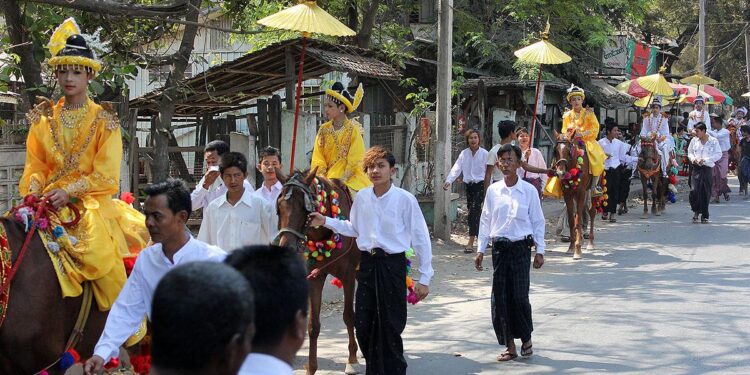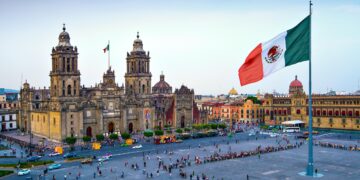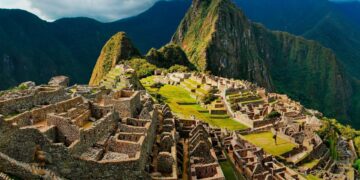In the heart of Myanmar, the spiritual journey of young Buddhists reaches a significant milestone through the ancient ceremony known as “Shinbyu.” This rite of passage, traditionally marking the transition of boys into monkhood, is deeply rooted in the country’s Buddhist culture and is celebrated with vibrant rituals and communal festivities. As families gather to honor this sacred event, AP Photos captures the poignant moments of transformation, devotion, and unity that define Shinbyu. This article delves into the significance of the ceremony, the intricate preparations involved, and the vibrant imagery that illustrates the profound impact of this time-honored tradition on the lives of young individuals and their communities.
Exploring the Cultural Significance of Shinbyu in Myanmar’s Buddhist Traditions
The Shinbyu ceremony, a compelling rite of passage for young Buddhists in Myanmar, serves as a vibrant connection to the nation’s rich cultural heritage and spiritual values. Traditionally held when boys reach the age of around 8 to 12, this rite symbolizes their transition into the monastic community, reflecting a significant moment in their lives and in the lives of their families. During the event, young boys are beautifully adorned in elaborate costumes, signifying the auspiciousness of the occasion. Families gather to celebrate, sharing in the festivities that include traditional music, dance, and local delicacies. The ceremony is not merely a personal milestone; it is also a community event that strengthens social bonds and reinforces collective identity among participants.
Beyond its immediate cultural impact, Shinbyu encapsulates profound Buddhist teachings and ideals, providing a framework for moral development and spiritual growth. Young participants are guided in virtues such as compassion, humility, and gratitude, which are integral to Buddhist philosophy. The ceremony is often marked by important rituals, such as the boys receiving monk’s robes, which signify their entry into the monkhood, albeit temporarily for many. This process fosters an understanding of the monastic life, encouraging respect for those who dedicate their lives to spirituality. Observances may include:
- Offering alms to monks
- Engaging in meditation practices
- Listening to teachings from respected monks
Through these elements, Shinbyu not only pays homage to Myanmar’s religious customs but also imparts valuable life lessons to the youth as they embark on their spiritual journeys.
The Role of Family and Community in Celebrating Shinbyu Ceremonies
The significance of family and community in the Shinbyu ceremonies cannot be understated, as they play an intricate role in shaping both the event and the young participants’ transition into Buddhist monastic life. Traditionally, families prepare extensively for this rite of passage, engaging in practices that emphasize their cultural heritage and spiritual values. Key elements involve:
- Gathering of Relatives: Families invite extended relatives, friends, and neighbors to share in the momentous occasion.
- Community Support: Community members often contribute to the logistics of the ceremony, helping with preparations and offering guidance.
- Shared Resources: The pooling of resources, such as food and decorations, epitomizes the collective effort in honoring the young initiates.
As part of this communal celebration, the significance of local traditions is highlighted, bringing members together in joy and reverence. During the procession, community members participate actively, often donning traditional attire, which reinforces their cultural identity. The event serves not only as a showcase of individual rites but also as an affirmation of community ties. Below is a brief overview of notable roles played by family and community during Shinbyu:
| Role | Contribution |
|---|---|
| Families | Organizing the event, offering prayers, and providing support to the young person. |
| Community Members | Assisting with arrangements, participating in ceremonies, and fostering a sense of belonging. |
| Monks | Leading the rituals and imparting blessings on the initiate. |
Understanding the Spiritual Journey of Young Monks Through the Shinbyu Experience
The Shinbyu ceremony embodies a profound rite of passage for young boys in Myanmar, symbolizing their transition into the monastic life. As families prepare for this significant event, cultural traditions and spiritual values interweave, showcasing the rich tapestry of Buddhist practices. During this time, boys, typically aged between nine and fourteen, don the robes of novice monks for the first time, stepping into a role that signifies respect and devotion. The experience not only marks their commitment to Buddhism but also serves as a moment for families to reaffirm their religious beliefs, fostering a strong sense of community and cultural identity.
Throughout the Shinbyu process, participants engage in various rituals that cultivate their spiritual awareness. These practices include:
- Procession: A colorful parade peaking with ceremonial celebrations as the community gathers to honor the young monks.
- Monastic Training: A period of learning basic Buddhist teachings and the daily monastic routines.
- Family Blessings: Parents and elders bestow blessings upon the young novices, reinforcing familial ties and support.
In embracing this journey, young monks learn the values of compassion, humility, and service to others. The Shinbyu experience not only enriches their lives with spiritual depth but also prepares them to contribute positively to society, carrying forward the teachings of the Buddha.
Wrapping Up
In conclusion, “Shinbyu” serves as more than just a ceremonial transition for young Buddhists in Myanmar; it embodies the rich tapestry of cultural, spiritual, and communal values that define this Southeast Asian nation. As families gather to witness their children take this significant step toward monkhood, the event highlights the enduring traditions that shape Myanmar’s identity. Amidst the challenges facing the country today, such rites of passage remain a testament to the resilience of its people and the deep-rooted faith that guides them. As covered in this article by AP News, the significance of “Shinbyu” transcends the individual, resonating through generations and fostering a sense of unity and hope.















